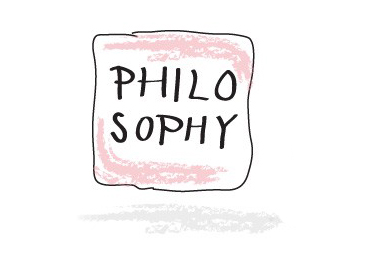One hallmark of our species may be that, unlike our squirrel monkey cousins, we are animated by a restless wonderment about what lies beyond the horizon of the known and the visible. Whether we call it curiosity or imagination, it is the longing that fuels all creativity, in science or in art. And this blind spot of our vision is where the chromatic equation grows infinitely interesting.
Yong writes:
Many more ineffable wonders of perception come abloom on the pages of Yong’s An Immense World. Complement this fragment of it with the great nature writer Ellen Meloy on the conscience of color from chemistry to culture and physicist Arthur Zajonc on the entwined history of vision and consciousness, then revisit cognitive scientist Alexandra Horowitz on how to see reality beyond the habitual limits of our perception.
Our Umwelt is still limited; it just doesn’t feel that way. To us, it feels all-encompassing. It is all that we know, and so we easily mistake it for all there is to know. This is an illusion, and one that every animal shares.
To see at all, ancient animals developed a type of protein receptor called opsin, which patrols the surface of the cell that contains it — a type of cell called a cone — and grabs at light-absorbing molecules, forming a partnership that sparks the chemical reaction of electrical signals that carry vital information to neurons — information which resolves in what we call vision. Some 500 million years ago, once our primordial ancestors moved from the depths to the shallows of the sea, they confronted something profound confusing from the vantage point of a creature with primitive monochromatic eyes only capable of distinguishing degrees of darkness: sunlight dancing on the surface of the rippling waves, rapidly refracting into the water. Suddenly, a single patch of visible space could vary in brightness a hundredfold from moment to moment under the flickering rays. Against this strobe assault, it became impossible to detect predator or prey.
This was an era when science still clung to the dangerous Cartesian binary of human exceptionalism, under which other animals experienced the world either exactly as we do or in greatly diminished ways — non-human animals were thought to either see the same rainbow we do or to be entirely colorblind. The notion that they could see color, and see it differently than we do, and see what we cannot see, was a radical demolition of dogma — too radical to fully accept. For a long while, ants were thought to be exceptional in the animal kingdom — fortunate flukes unrepresentative of the sub-human whole. Eventually, bees joined them.

This process, known as opponency, is the basis of all color vision. Different animals have different types and numbers of opsins, unmooring the perception of color from its physics and making it an inherently subjective experience.
But then, in a mere century of science — a blink of evolutionary time — numerous birds, fish, reptiles, and insects were reluctantly admitted into the UV-sighted ranks. Still, we excluded mammals from the realm of possibility — this is the history of our species — until, in a humbling testament to Richard Feynman’s insistence that the imagination of nature will always exceed that of the human animal, a team of scientists discovered a short cone tuned to UV light in three species of rodents. Within half a human generation, many mammals — including dogs, cats, reindeer, cows, and ferrets — were discovered to detect UV light with their short blue cones.
[…]
[…]
[…]
If bees were scientists, they might marvel at the color we know as red, which they cannot see and which they might call “ultrayellow.” They might assert at first that other creatures can’t see ultrayellow, and then later wonder why so many do. They might ask if it is special. They might photograph roses through ultrayellow cameras and rhapsodize about how different they look. They might wonder whether the large bipedal animals that see this color exchange secret messages through their flushed cheeks. They might eventually realize that it is just another color, special mainly in its absence from their vision. And they might wonder what it would be like to add it to their Umwelt, bolstering their three dimensions of color with a fourth.

Seeing more colors isn’t advantageous in and of itself. Colors are not inherently magical. They become magical when and if animals derive meaning from them. Some are special to us because, having inherited the ability to see them from our trichromatic ancestors, we imbued them with social significance. Conversely, there are colors that don’t matter to us at all. There are colors we cannot even see.




